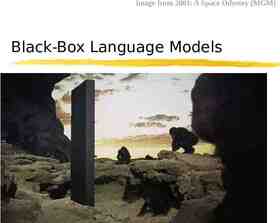BUILDING INDUSTRYUNIVERSITY PARTNERSHIPS John Hu, Ph.D. Professor,
11 Slides5.39 MB

BUILDING INDUSTRYUNIVERSITY PARTNERSHIPS John Hu, Ph.D. Professor, Chemical and Biomedical Engineering Statler Chair for Natural Gas Utilization Matthew Valenti, Ph.D., P.E. Professor and Chair, Lane Computer Science and Electrical Engineering Director, Center for Identification Technology Research (WVU Site) Lane Chair for Computer Science and Electrical Engineeing October 14, 2020 The WVU Energy Institute energy.wvu.edu

The Bottom Line Up Front: You Can and Should Collaborate with Industry Opportunities for funded collaboration – NSF: I/UCRC program – Small Business: SBIR/STTR programs – Direct interaction: Contracts, grants, and gifts – DOE: ARPA-E, RAPID, and EERE Indirect collaborations – Letters of support, senior-design mentorship General advice – increase your visibility to industry The WVU Energy Institute energy.wvu.edu

The NSF I/UCRC Program Industry/University Collaborative Research Center – Currently 85 centers nationwide – One center per technology area – you should know which center is in your area! WVU has two centers: – Center for Identification Technology Research (CITeR) – Center for Integration of Composites into Infrastructure (CICI) Many centers are multi-university – You could join as a new site to an existing center Requirements per Site: (5-year phases) – Phase I: 150K/year of industry funding (at least 3 members) – Phase II: 200K/year of industry funding (at least 4 members) Benefits: – University overhead is waived or limited to 10% on membership fees – NSF provides matching (1-1 for phase 1, 1-2 for phase II) – Research collaborative – results shared amongst members – Pipeline for placing your students The WVU Energy Institute energy.wvu.edu

SBIR and STTR Programs Small Business Innovation Research (SBIR) – Funding for small companies – Universities may participate (up to 50%) Small Business Technology Transfer (STTR) – Funding for small company to work with a university or other research institution – University must participate (at least 30%) Most government agencies involved (DoD, NSF, NASA, DOE, DHHS) – Some agencies have open call, others have specific topics – You can plant the seeds for a specific topic by discussing w/ program manager Three-phase program: – Phase I up to 150K over 6 months. – Phase II typically 1M over 2 years. – Phase III usually has no federal funding – emphasis on tech transfer and commercialization Matchmaking services: – APEX -- https://apex-innovates.org/ The WVU Energy Institute energy.wvu.edu

Working Directly w/ Industry You can work directly w/ industry Funding can be by grant, contract, or gift – Grants & Contracts through OSP (WVU Research Corp) – Gifts through Foundation Be careful w/ respect to IP issues – May need NDA and other agreements – Don’t sign anything yourself! – [email protected] The WVU Energy Institute energy.wvu.edu

Other Ways to Interact w/ Industry Undergrad project sponsorship – Might just be technical guidance on a senior design project. – May include funding support (often as a gift) – Projects with Industry (e.g., MAE 471) Training and tutorials Consulting – Be aware of university policies, which require disclosure and approval, and limit to not more than 1 day per week. Letters of support – Your CAREER proposal will be much stronger with letters from industry. The WVU Energy Institute energy.wvu.edu

DOE APRA-E Project Background Partners Microwave Catalysis, 1 atm, 260oC High risk high reward project No fundamental research. TRL level Industrial participation University-National Lab-Industry The WVU Energy Institute energy.wvu.edu Key learnings Know your capability and resources. Know your weakness and select partners. Commitment from industrial companies.

DOE RAPID Project Background Partners NETL U Pitt Shell Key Learnings Early participation Attending workshops- must Team work The WVU Energy Institute energy.wvu.edu Resource and capability (do not over promise) Lead or being a Sub Background IP

DOE EERE H2@Scale Project Background Partners Hydrogen production without generating CO2 𝑪𝑯 𝟒 𝑪 𝒔 𝟐 𝑯 𝟐 Our Approaches PNNL C4-MCP SoCal Gas NCSU Key Learnings Early participation Attending workshops-CRADA program, national lab leads Who you partner with The WVU Energy Institute energy.wvu.edu Background IP-option to industry Continue to develop foreground IP

Other Key Learnings Industrial funded research o Why will an industrial fund you? o IP positions o Example: microwave catalysis Build a Website-CIGRU https://cigru.wvu.edu/ Publication and presentations The WVU Energy Institute energy.wvu.edu

Some general advice You should seek opportunities to interact w/ industry – Give talks, seminars, and tutorials when asked. – Go to conferences, meetings, and trade shows where industry is present. You want industry to come to you – Have a high-visibility web-page with useful content Paper preprints, tools, software, and data. Cultivate your network – You can reap the benefits when you need letters of support The WVU Energy Institute energy.wvu.edu






